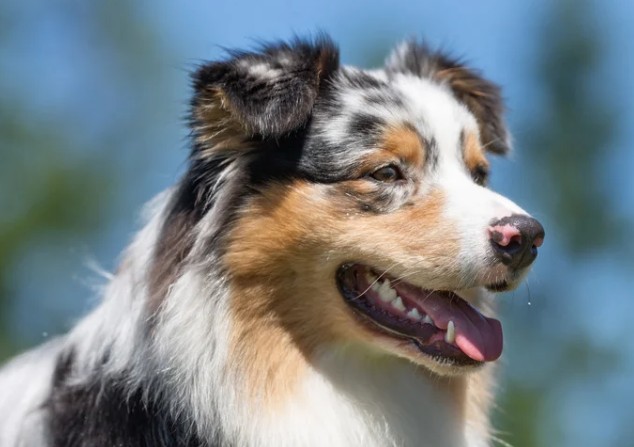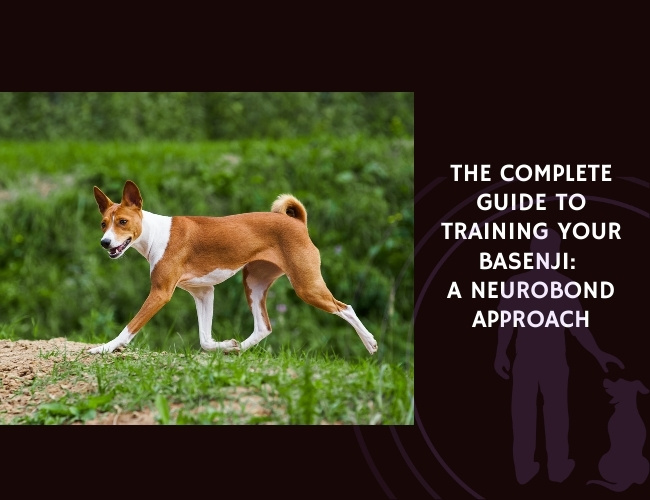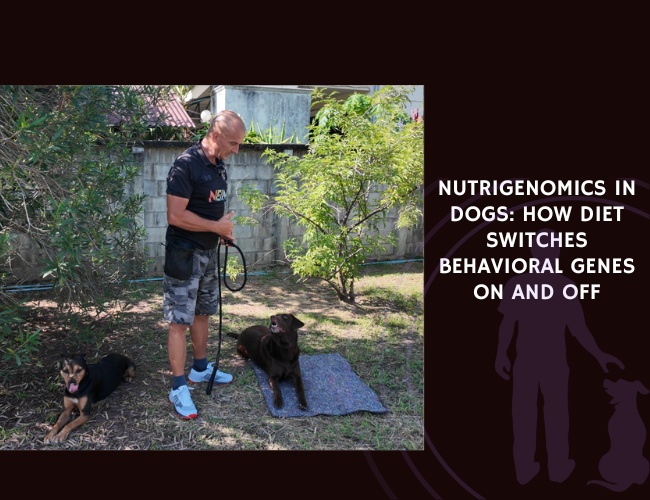Introduction to the Australian Shepherd
A Working Heritage
The Australian Shepherd is best known for its roots as an energetic, highly capable herding dog. Despite its name, the breed was actually developed in the United States to work alongside ranchers and farmers. Bred for intelligence and versatility, Australian Shepherds excelled at managing livestock and adapting quickly to different tasks on the ranch. This working history is still seen in their everyday behavior. Aussies, as they are affectionately called, thrive when given a job to do and love being part of the family’s daily routine.
What Sets the Breed Apart
Australian Shepherds are medium-sized dogs with striking looks—from their expressive eyes to their multicolored, often merle-patterned coats. Their intelligence is unmistakable. Aussies learn new commands quickly, solve problems on the go, and often outsmart even experienced handlers if left unchecked. This alertness and intelligence come with high energy levels, making them natural athletes. Their strong attachment to their owners, paired with their keen sensitivity to changes in the environment, makes them both loyal and vigilant companions.
What else makes them truly unique is their emotional expressiveness. Australian Shepherds thrive on human interaction and often wear their hearts on their sleeves, showing excitement, stress, or affection very openly. They are sociable with those they know but may be reserved around strangers, especially without early socialization.
Why Understanding Their Needs Matters
An Australian Shepherd’s herding past shapes nearly every part of its life. Without the right physical activity and mental stimulation, the breed can develop habits like excessive barking, anxiety, or destructive chewing. They need regular challenges and plenty of exercise to stay happy and healthy. Being handler-oriented, Aussies do best with owners who can dedicate time for training, play, and companionship.
Understanding these needs is crucial for anyone considering welcoming an Australian Shepherd into their home. Proper care, enrichment, and training will lead to a harmonious and rewarding relationship for both the dog and its family.
With this foundation set, let’s continue to explore what makes the Australian Shepherd a truly special companion.
Character & Behavior Traits
Intelligence and Problem-Solving Roots
Australian Shepherds are famous for their intelligence. This cleverness comes from their long history as working herding dogs. These dogs quickly figure out puzzles, spot patterns, and learn both simple and complicated commands. When you work with an Australian Shepherd, you may notice how fast they pick up new tricks or jobs. This makes them fun partners for interactive games and challenging activities. Their problem-solving brain also means they get bored easily, so they need something to work on each day to stay happy and out of trouble.
High Reactivity and Alertness
Because of their herding roots, Australian Shepherds respond quickly to movement. If a child runs by or a squirrel dashes through the yard, they’ll notice immediately and may give chase. This sharp alertness is why they do so well in sports like agility and obedience. However, it can also mean they bark or react to things you might not notice. They are always watching their surroundings for anything new or different. This makes them excellent watchdogs, but it also means you’ll need to train them to respond calmly to everyday sights and sounds.
Sociability and Natural Suspicion
Australian Shepherds love their families. Once bonded, they want to be with their people all the time. They often follow family members from room to room and enjoy close interaction. These dogs are happiest when involved in family activities—whether it’s a walk in the park or relaxing at home.
However, they may be wary of strangers. Without early and ongoing socialization, they can become suspicious and reserved. Proper exposure to new people, animals, and places helps them grow into well-rounded, confident adults. In unfamiliar situations, their caution can make them seem shy, but with patience and positive experiences, they learn to accept new friends.
Balanced understanding and guidance help Australian Shepherds use their natural gifts while avoiding problem behaviors. This forms the heart of a successful relationship with this energetic and loyal breed.
Training & Mental Stimulation
Harnessing Intelligence Through Positive Training
Australian Shepherds are known for their sharp minds and strong desire to please. They thrive when training is built on positive reinforcement, such as treats, praise, or play. This kind of approach matches their eagerness and teaches them complex commands very quickly. Sessions should be structured but kept engaging. Interactive play, like fetch or tug, can be turned into training opportunities so learning feels like a fun game. Consistency in commands and routines helps prevent confusion, making it easier for your dog to succeed and feel confident.
Impulse Control and Desensitization
Due to their herding roots, Australian Shepherds are very reactive to movement and sudden changes in their environment. This trait can be managed using targeted impulse control training and gradual desensitization. Training your dog to “wait” at doors or remain calm as distractions pass by is a key part of this process. Slowly introducing new sights and sounds helps reduce their arousal and makes them less likely to overreact. Keeping sessions short and positive prevents them from feeling overwhelmed, so always train within your dog’s comfort zone.

Keeping Minds Busy With Performance-Based Activities
These dogs have endless energy for learning and problem-solving. If left without enough mental stimulation, they can become anxious, destructive, or develop bad habits like excessive barking. To channel their energy, it is best to rotate a variety of challenges throughout the week, such as:
- Agility courses
- Herding trial games
- Obedience routines
- Nose work or scent games
- Puzzle toys and interactive feeders
Switching up activities keeps things novel and exciting, helping your Australian Shepherd stay sharp and content. Regular mental exercise, paired with clear communication from their handler, is essential for a harmonious relationship.
By investing time in smart, supportive training, you’ll help your Australian Shepherd reach their potential and prevent the boredom that often leads to trouble.
Exercise Requirements & Physical Needs
Daily Exercise Standards
Australian Shepherds thrive on a busy lifestyle and need lots of exercise every day to stay happy and balanced. Aim for at least 90–120 minutes of activity spread out over the day. This is not just a casual stroll—think brisk walks, running, fetch, or structured playtime. Without this level of regular physical work, these dogs can become restless and even destructive. Their bodies and minds both need to be engaged to prevent problems such as excessive barking, digging, or chewing on furniture. A tired Aussie is a well-behaved Aussie! 😊
The Best Activities for High Energy
Because they are bred for herding, Australian Shepherds love to move and use their brains. Activities that match this natural drive include:
- Agility courses
- Frisbee or fetch games
- Herding exercises
- Hiking or running with family
- Scent work and nose games
If you have a fenced backyard, use it for supervised playtime. But remember, these dogs do best when working side-by-side with their people, not left out alone. Try rotating activities to keep things interesting. Interactive toys and puzzle feeders add mental exercise and break up the routine. This helps reduce boredom and negative behaviors that can occur when Aussies are left under-stimulated.
Impact of Insufficient Exercise
A sedentary lifestyle is one of the worst things for this breed. Without enough activity, Australian Shepherds can become anxious, bark nonstop, or act out by chewing, digging, or trying to herd people and other pets. Some may even develop compulsive habits like excessive licking. These are signals they need more outlets for their energy and intelligence, not just simple walks around the block.
Meeting their physical needs is key to a fulfilled and harmonious relationship. When their bodies and minds are satisfied, Australian Shepherds show their best traits—enthusiasm, affection, and loyalty—making them truly wonderful companions.
Work. Watch. Wonder.
A mind made to move.
Australian Shepherds aren’t pets—they’re partners. Bred for precision, they crave challenge, clarity, and connection every single day.
Loyalty with lightning reflexes.
These dogs read motion like language. Without guidance, they’ll herd your life into chaos—but with it, they become unstoppable allies.



Emotion meets instinct.
Aussies don’t hide how they feel. They bond deeply, vocalise openly, and need a human who doesn’t just lead—but listens.
Nutritional Considerations
Australian Shepherds are spirited dogs with energy to spare. Because of their medium size and working background, they need careful nutritional planning that matches both their activity level and unique health needs.
Understanding Caloric and Macronutrient Needs
The caloric needs of an Australian Shepherd can vary a lot depending on how active they are. A highly active dog, like one working on a farm or in agility sports, will require more calories—especially from fats and proteins—than a companion who enjoys daily walks and play. Working dogs benefit from diets with increased fat content to fuel all-day activity, while every Aussie needs quality protein to support lean muscle mass and help with muscle recovery after exercise.
If your dog is less active, you’ll need to provide fewer calories to help avoid weight gain. Adjust portions based on their body condition and exercise routine, and always use a structured feeding schedule to keep things consistent. 🍽️
Supporting Joint Health for Mobility
Life on the move means that an Australian Shepherd’s joints get plenty of use. Joint support is key for long-term mobility and comfort, especially as your dog ages. Adding supplements like omega-3 fatty acids and glucosamine to their diet can be helpful to keep joints healthy and reduce the risk of issues as they grow older. It’s a smart, preventative step for such an active breed.
Managing Weight and Digestive Sensitivities
Australian Shepherds can gain weight quickly if their diet isn’t aligned with their exercise level. Structured meals, portion control, and regular body condition checks make a big difference. Remember, carrying extra weight can stress joints and impact your Aussie’s quality of life.
Some Aussies also have digestive sensitivities. Providing a diet with a moderate variety of ingredients may help promote smoother digestion and reduce stomach upset. Watch for changes in appetite, stool quality, or energy, and don’t hesitate to consult your veterinarian if you have concerns. 🐾
Taking care to provide balanced nutrition sets the stage for a healthy, active life for your Australian Shepherd, supporting many adventures ahead.
Health Concerns & Genetic Predispositions
Common Genetic Health Issues
Australian Shepherds are a wonderful breed, but they do face several serious health concerns that every owner should know about. Some of the most frequent genetic issues include Collie eye anomaly (CEA), hip dysplasia, and multidrug sensitivity due to the MDR1 (Multidrug Resistance 1) mutation. CEA affects a dog’s vision and can sometimes lead to blindness. Hip dysplasia is a problem with how the hip joint develops, often causing pain and trouble moving as the dog gets older. The MDR1 mutation means your dog may have bad reactions to some common medicines, so knowing about this early is super important [The Complete Guide to the Australian Shepherd].
Other reported issues are epilepsy and autoimmune thyroiditis, though they are less common. Because many of these health problems are inherited, working with reputable breeders who test for these issues is vital. This helps lower the chances of your pup having severe problems down the line.
Merle Breeding Risks
Australian Shepherds are often admired for their striking merle (spotted) coats. However, breeding two merle-patterned dogs together is very risky. Merle-to-merle breeding significantly raises the chances of puppies being born deaf, visually impaired, or both. These congenital (from birth) defects can make daily life challenging for affected dogs and owners. Responsible breeders will avoid these pairings to keep puppies healthy and happy [The Complete Guide to the Australian Shepherd].
Screening and Preventative Care
The best approach is being proactive with your dog’s health. Regular veterinary checkups should include:
- Eye exams to check for CEA and other problems
- Hip evaluations to spot dysplasia early
- DNA tests for the MDR1 mutation
Starting screenings early ensures that any issues can be managed before they get worse. Due to their high energy, keeping up with preventative care—like giving the right nutrition and exercise—also helps keep your Australian Shepherd healthy.
Learning about these risks and what to watch for is a big part of giving your dog the professional, supportive, and informative care they deserve. Next, it’s important to consider how your Australian Shepherd’s surroundings and experiences can shape their happiness and well-being.

Socialization & Environmental Needs
Setting the Stage Early: The Role of Socialization
To raise a well-adjusted Australian Shepherd, early and consistent socialization is essential. These dogs have a strong herding instinct and high reactivity, which can become problematic if not addressed. Proper exposure to a wide range of people, places, and situations builds confidence and lessens the risk of fear-based behaviors or unwanted suspicion toward strangers. This means starting socialization as a puppy and making sure your dog meets different people, friendly animals, and hears various household noises. Fun trips to parks, new neighborhoods, and calm introductions to visitors encourage durability in new environments.
Fulfilling Their Minds: Environmental Enrichment
Australian Shepherds are extremely intelligent and thrive when their minds are kept active. Without enough mental enrichment, boredom can lead to trouble, including chewing, barking, or digging. Interactive toys, puzzle feeders, and training games are great for keeping their minds engaged. Rotating toys and teaching new tricks keeps things interesting. You might even try agility equipment in your backyard, letting your Aussie figure out small obstacles or fun backyard searches.
Managing Herding Instincts Around Kids and Pets
One hallmark of the breed is the strong herding behavior, which can sometimes be directed at children or other household pets. Aussies may try to gently nip or chase moving children or cats, seeing them as part of their “herd.” Clear boundaries and plenty of supervision are crucial. Redirect their attention with fetch, tug-of-war, or structured commands. Teaching your dog impulse control, like responding to “leave it” or “stay,” helps prevent unwanted herding. Socializing with dogs and children in a safe setting builds confidence and respectful interactions.
Australian Shepherds need both loving structure and lots of opportunities for discovery. By understanding these needs, you’ll create a safer, happier home for your energetic companion and everyone living with them.
Living With an Australian Shepherd
Creating a Happy Home
Australian Shepherds are happiest in homes where there’s lots of action and involvement. They truly thrive with active individuals or families who love outdoor activities and want a companion for adventures. A large, securely fenced yard is ideal for safe play and energy release. These dogs struggle in apartments or places without space to run, and a sedentary lifestyle can quickly lead to issues like destructive chewing or excessive barking. A daily mix of walks, training games, and fun competitions goes a long way in keeping them content and balanced.
Integrated family participation is key. Australians form deep bonds with their people and do not do well left alone for long periods. They fit best in a home where at least one family member is present most of the day, or where there’s plenty of canine or human company. Including them in daily routines—whether that’s household chores, playtime, or outings—keeps them happier and less anxious.
Navigating Emotional Expressivity
These dogs are emotionally expressive, using vocalizations and clear body language to communicate moods. You might notice whining, excited barking, or pacing when they’re hyped up. They can also show stress through paw licking or hiding in quiet spots.
Supporting their wellbeing means watching for these stress signals. For instance, during loud gatherings or chaotic events, give your Aussie a calm retreat space with toys or a puzzle feeder. Gentle reassurance and maintaining predictable routines help them feel secure. Avoid punishing vocal or expressive behaviors—redirecting their energy with training or a quick play session often resolves tension without frustration.
Long-Term Commitment
Owning an Australian Shepherd is a true long-term relationship. Their lifespan is about 12–15 years. Throughout those years, they need:
- Consistent daily exercise (90–120min)
- Routine veterinary visits and preventive care
- Mental stimulation from training and games
- Ongoing social interaction with family and friends
Their love for activity and connection means you’re signing up for an active lifestyle, rain or shine. Before welcoming one home, honest reflection on your routine and support network ensures both you and your Aussie will thrive together.
Understanding these needs will set the stage for a rewarding companionship and help you support a healthy, happy dog for many years to come.
Conclusion: Is an Australian Shepherd Right for You?
What It Takes to Have an Australian Shepherd
Welcoming an Australian Shepherd into your family is a big commitment. This breed bursts with energy, intelligence, and emotional depth. To meet their needs, you’ll need to set aside 90-120min daily for exercise, plan regular training, and offer ongoing mental challenges. These dogs form deep bonds with their families and thrive when a person is present most of the day.
Your lifestyle should include physical activity, consistency, and a willingness to learn alongside your dog. If you enjoy hiking, running, or participating in canine sports, this breed will keep up every step of the way. Their handler orientation means they will look to you for cues, so clear communication and routine are key.
The Rewards of an Active Companion
Australian Shepherds shine when they have a job to do. Their eagerness in activities like agility, herding, or even advanced obedience is second to none. With the right care, you’ll gain a devoted, loving friend and an enthusiastic workout partner. They respond strongly to positive reinforcement, which makes training a joyful experience for both dog and owner.
Sharing your life with an Australian Shepherd means having a playful and attentive companion who is always eager to engage. Their emotional expressiveness will make you feel understood, and their sharp minds bring a sense of partnership that is truly special.
Making the Right Choice
Before bringing home an Australian Shepherd, consider their needs honestly. An under-exercised or unchallenged Aussie can develop behavioral issues, including anxiety and destructive habits. Commitment means providing a healthy diet suited to their energy, regular healthcare, and structured enrichment every day. These dogs do best with active individuals or families willing to invest the time and attention they deserve.
Choosing this breed isn’t just about loving their beautiful coats or striking eyes. It’s about embracing a lifestyle filled with activity, learning, and a lasting bond. If you’re ready for that commitment, the Australian Shepherd will reward you with loyalty, energy, and joy every single day.










